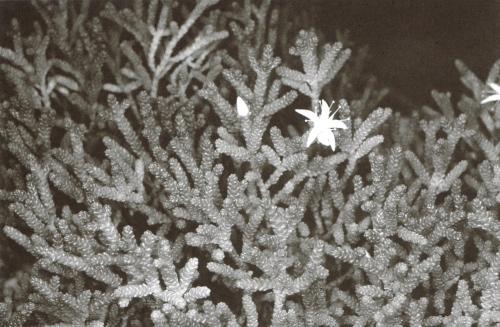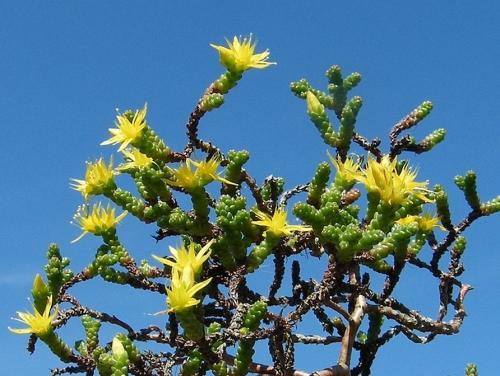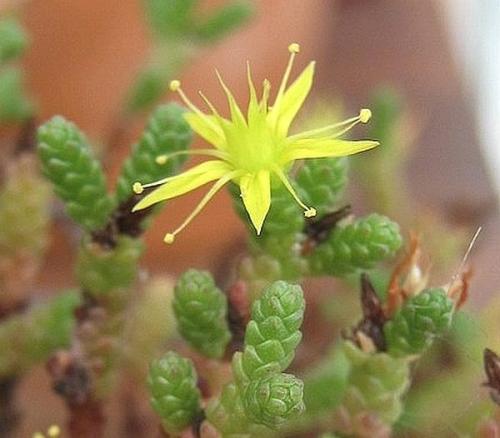MUSCOIDEUM Rose, 1903.
Type : Conzatti & Gonzales 777, Oaxaca, Mexico.
Subgenus Sedum
Distribution: Mexico (Oaxaca, Puebla).
Description (by 't Hart & Bleij in IHSP, 2003) :
Perennial herbs.
Stems branched, creeping.
Leaves alternate, obtuse, minute, thickish, closely set along the stem.
Inflorescences terminal with 1 or 2 flowers.
Flowers 5-merous, sessile, sepals ovate, obtuse, ± 1 mm, petals lanceolate, ± 3,5 mm, yellow.
Cytology : 2n = 68
Ray Stephenson (Sedum, Cultivated Stonecrops, 1994, pp 257 - 258) :
Sedum muscoideum is not an uncommon stonecrop in cultivation but it is almost always labelled S. cupressoides Hemsley. The latter is a pink-white-flowered species not in cultivation. The confusion, I think, appears to have started with Rose (1905) who described petals of S. cupressoides as "yellow (but described as rose-colored)." Rose (1903) offered a correct description of S. muscoideum : "[c]losely resembling Sedum cupressoides, but with yellow flowers. Mr. Hemsley has compared the material with his type of the latter species and agrees with me that it is different." Praeger obviously missed the earlier version in the Bulletin of the New York Botanical Garden and depicted S. muscoideum beautifully but with the label S. cupressoides. This error was perpetuated by Fröderström (for petal color of herbaria is often faded), and then Evans. Uhl (1985) pointed out that the true S. cupressoides is similar to S. liebmannianum, and that plants have invariably been confused.
Sedum muscoideum is a distinct plant with tiny, imbricate leaves, tightly appressed to 8-cm (3-in) long, upright stems, and large yellow flowers that are produced in small numbers in summer.

Sedum muscoideum carries large flowers with respect to the width of the stems and tightly packed leaves.
Habitat : This stonecrop is native to Peotitlán, Oaxaca, the Southern Sierra Madre, at about 3000 m (10 000 ft).
Main points of distinction : This is an easy plant to identify, but very similar to tiny forms of European Sedum acre. Sedum muscoideum resembles a tiny whipcord hebe and is much taller than S. acre var. minus. The Mexican species has no real inflorescences : sessile, kyphocarpic flowers appear at stem tips, with leaves clustered right up to the sepals. Sepals are free, somewhat unequal, and only one-third the length of long, lanceolate petals.
Variation : Plants in cultivation appear to be propagations of those introduced at the beginning of the twentieth century. Until very recently, no newly collected clones have been introduced to cultivation. F.O.166, distributed by the Echeveria Society, was collected on the Sierra Negra near Coxcatlán Pue at 2400 m (7900 ft), and appears more quickly growing, but vegetatively identical to the common clone, n = 34.
Horticulture : Due to its high-altitude habitat, Sedum muscoideum is fairly hardy and should be fine in a cold frame in most areas. It is fully hardy in cool, wet, temperate areas. As with most alpines, it dislikes hot summer greenhouse conditions.

